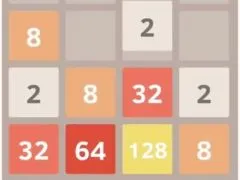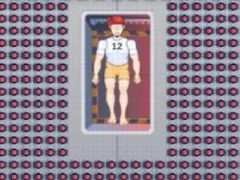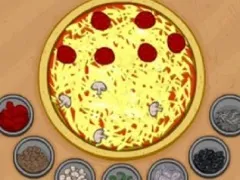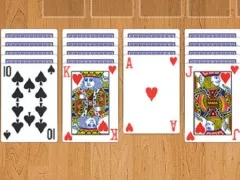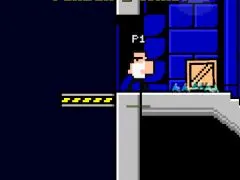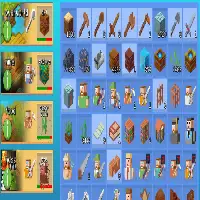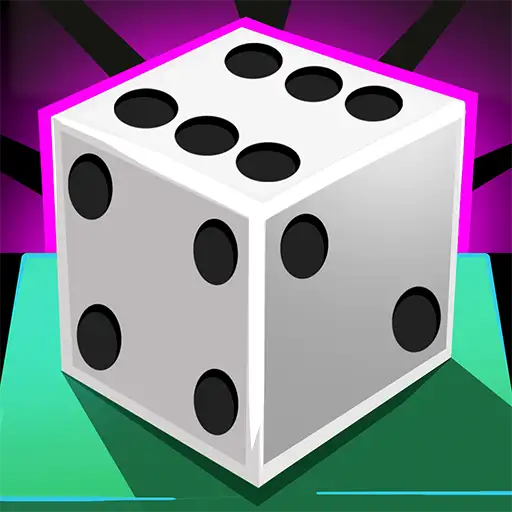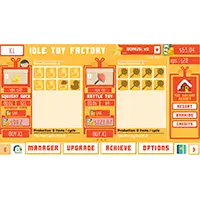PIANO TILES
SIMILAR GAMES
Description
Piano Tiles - GamePluto
About Piano Tiles - GamePluto
Welcome to the definitive guide to Piano Tiles, a game that has captivated millions with its deceptively simple yet incredibly addictive gameplay. At [GamePluto](https://gamepluto.gitlab.io/), we delve deep into the world of this popular musical arcade experience, dissecting its core mechanics, exploring its various iterations, and offering insights that will elevate your understanding and appreciation of the game. We are dedicated to providing the most comprehensive and engaging content available, ensuring that players of all levels, from absolute beginners to seasoned virtuosos, find valuable information within our pages. Prepare to embark on a journey through rhythm, reflexes, and sheer determination as we unravel the secrets of mastering Piano Tiles.
The Allure of Piano Tiles: A Symphony of Simplicity
The enduring appeal of Piano Tiles lies in its elegant fusion of accessibility and challenge. The fundamental concept is straightforward: black tiles descend from the top of the screen, and your sole objective is to tap them in sequence, mimicking the progression of musical notes. This intuitive design makes it instantly understandable for anyone, regardless of their gaming background. However, beneath this surface simplicity lies a profound test of reaction time, focus, and auditory perception. As the tempo increases and the patterns become more complex, the game transforms into a thrilling, high-stakes dance between player and digital instrument. Each successful sequence rewards the player with a fragment of a melody, creating a satisfying auditory and visual feedback loop that fuels the desire to continue playing and improve. The sheer satisfaction of hitting a long streak of tiles perfectly, culminating in a beautiful musical phrase, is a powerful motivator.
Core Gameplay Mechanics: Mastering the Black Keys
At its heart, Piano Tiles revolves around precise timing and rapid execution. The game presents a continuous stream of black tiles, each representing a musical note. The player's task is to tap each black tile as it reaches the bottom of the screen. Missing a tile or tapping a white tile (in some game modes) results in an immediate game over. The challenge escalates through several key factors:
- Speed Progression: The tiles begin to fall at a moderate pace, allowing players to get accustomed to the rhythm. However, as the game progresses, the speed at which the tiles descend increases dramatically, demanding increasingly quicker reflexes. This escalating tempo is a primary driver of the game's addictive nature, constantly pushing players to their limits.
- Pattern Complexity: Beyond simple sequential tapping, the game introduces various patterns. These can include rapid bursts of tiles, alternating sequences, and combinations that require players to adapt their tapping strategy on the fly. Understanding and anticipating these patterns is crucial for sustained success.
- Rhythm and Melody: Each set of tapped tiles contributes to a recognizable musical piece. The game's genius lies in its ability to synchronize the visual falling tiles with a musical score, creating an immersive audio-visual experience. Successfully hitting a long sequence often results in a satisfying melodic phrase, reinforcing the player's connection to the music.
- Accuracy and Precision: Tapping a tile too early or too late will result in a missed note. The margin for error becomes progressively smaller as the game speeds up, demanding exceptional hand-eye coordination and an acute sense of timing. The difference between a perfect play and a failure often comes down to milliseconds.
Exploring the Variations of Piano Tiles
While the core concept of tapping black tiles remains constant, Piano Tiles has evolved to incorporate a variety of game modes and thematic variations, each offering a fresh challenge and a new way to experience the game. These variations are key to the game's longevity and its ability to appeal to a broad audience.
Classic Mode: The Foundation of the Experience
This is the quintessential Piano Tiles experience. Players are presented with an endless stream of black tiles and must tap them as quickly as possible. The objective is to achieve the highest score by tapping as many tiles as you can before making a mistake. This mode is the purest test of reflexes and endurance, often leading to marathon sessions as players strive to break their personal bests. The simplicity here is deceptive; maintaining focus and rhythm at high speeds requires immense concentration.
Arcade Mode: A Strategic Twist
Arcade mode introduces an extra layer of strategy by incorporating power-ups and challenges. Players might encounter tiles that require multiple taps, tiles that need to be held down, or special tiles that grant score multipliers or protective shields. This mode adds a dynamic element, requiring players to not only react quickly but also make split-second decisions about how to best utilize the available advantages. It transforms the experience from a pure reflex test into a more engaging, tactical challenge.
Zen Mode: The Rhythmic Breathing Ground
Designed for players seeking a more relaxed yet still engaging experience, Zen mode features a steady stream of tiles at a consistent, manageable speed. The focus here is on maintaining a smooth, unbroken rhythm and achieving a high score through sustained accuracy rather than sheer speed. It's an excellent mode for practicing consistency and building endurance for the more demanding modes. Many find this mode meditative, allowing them to get lost in the music.
Relay Mode: A Test of Stamina and Adaptability
Relay mode often presents players with a series of songs or challenges, each with its own unique tempo and difficulty. Successfully completing one segment unlocks the next, pushing players to adapt to changing musical styles and speeds. This mode is a true test of a player's overall skill set, demanding proficiency across a range of challenges. The sense of accomplishment from conquering a long relay is immense.
Special Thematic Modes: A Visual and Auditory Feast
Over time, Piano Tiles has introduced numerous themed editions, often tied to popular music genres, holidays, or specific artists. These modes not only offer unique musical selections but also often feature distinct visual aesthetics, enhancing the overall immersive experience. Whether it’s a classical music rendition or a modern pop arrangement, these thematic variations keep the game fresh and exciting.
Tips and Tricks for Achieving Piano Tile Mastery
Becoming a proficient player in Piano Tiles requires more than just innate talent; it demands practice, strategy, and a deep understanding of the game's nuances. At [GamePluto](https://gamepluto.gitlab.io/), we've compiled essential tips to help you ascend the leaderboards and unlock your true potential.
Develop a Consistent Tapping Technique
Find a comfortable and efficient way to tap the tiles. Many players prefer using their index fingers, while others find success with their thumbs. Experiment to see what feels most natural and allows for the quickest, most accurate taps. Consistency is key; a stable technique will reduce errors and improve your rhythm. Some advanced players even use multiple fingers on a single hand for incredibly rapid sequences.
Focus on Rhythm, Not Just Speed
While speed is undoubtedly important, a strong sense of rhythm is paramount. Listen to the music and try to internalize the beat. This will help you anticipate the appearance of the tiles and tap them with greater accuracy, even at high speeds. Don't just react to the visuals; let the music guide your fingers. The game is, after all, a piano simulation.
Train Your Eyes to Scan Ahead
Instead of focusing solely on the tile that is about to reach the bottom, train your eyes to scan ahead and identify the upcoming patterns. This proactive approach allows you to prepare your fingers for subsequent taps, leading to smoother transitions and fewer missed notes. Look for the overall flow of the tiles, not just individual ones.
Practice Regularly and Strategically
Consistency in practice is crucial for improvement. Dedicate regular, focused sessions to playing Piano Tiles. Start with modes that you find comfortable and gradually move to more challenging ones. Don't be discouraged by mistakes; view them as learning opportunities to identify your weaknesses. Short, frequent practice sessions are often more effective than infrequent long ones.
Understand Your Device's Responsiveness
The responsiveness of your device's touchscreen can significantly impact your performance. Experiment with different devices if possible, or adjust your tapping pressure and speed to match your device's capabilities. Ensure your screen is clean and free from smudges that might interfere with touch input.
Utilize Audio Cues
The sound effects in Piano Tiles are not merely for ambiance; they are integral to the gameplay. Listen for the subtle audio cues that accompany the appearance of tiles. These cues can provide an additional layer of feedback, helping you to time your taps even when your visual focus is challenged. The distinct sound of each note is a vital part of the feedback loop.
Master Different Tap Styles
Beyond simple taps, familiarize yourself with other tapping mechanics that may appear in different modes, such as holding tiles or performing quick double taps. Understanding and executing these variations flawlessly is essential for achieving high scores in more complex game modes.
The Global Phenomenon of Piano Tiles
The widespread popularity of Piano Tiles is a testament to its universal appeal. It transcends language barriers and cultural differences, offering a shared experience of musical engagement and skillful play. The competitive nature of the game, with its leaderboards and high-score chasing, fosters a vibrant global community of players. This shared passion for rhythm and reflexes has created an environment where players can connect, share strategies, and celebrate each other's achievements. The simple act of tapping tiles to music has become a global pastime, bringing joy and a sense of accomplishment to millions.
Conclusion: Your Journey to Piano Tile Excellence
Piano Tiles is more than just a game; it's an engaging exercise for the mind and a delightful exploration of music and rhythm. At [GamePluto](https://gamepluto.gitlab.io/), we are committed to providing you with the most in-depth and valuable resources to help you excel. By understanding the core mechanics, exploring the various game modes, and implementing the strategies outlined above, you are well on your way to achieving true mastery. We encourage you to keep playing, keep practicing, and most importantly, keep enjoying the beautiful symphony of Piano Tiles. May your taps be swift and your scores be legendary.
Piano Tiles is a fast-paced rhythm game that challenges players to tap on the black tiles while avoiding the white ones, all set to a variety of musical compositions ranging from classical masterpieces to contemporary hits. Each tap must be timed with the rhythm of the music, and accuracy is crucial as a single mistake means the game is over. As players progress, the speed of the tiles increases, testing reflexes and promoting a thrilling gameplay experience.
Enhance Your Experience with Various Modes
The game features several modes that cater to different skills levels and musical tastes. Whether it’s racing against the clock in Time Trial, playing through preset songs in Classic mode, or exploring lengthy compositions in Endless mode, Piano Tiles offers a dynamic platform for improving hand-eye coordination and musical perception. New songs are regularly added, keeping the game fresh and engaging for returning players. This simple yet addictive game has captured the attention of millions, offering a compact musical challenge at your fingertips.
